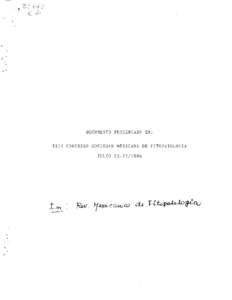Problemas patologicos en el cultivo de la yuca
The main pathological problems of the cassava crop are summarized. Four bacterial diseases have been identified and their causal agents characterized: CBB, angular leaf spot, bacterial stem rot, and bacterial stem gall. Two mycoplasmal problems, witches` broom and antholysis, have been identified. The most important viral diseases are CAMV, common mosaic, Colombian mosaic, leaf vein mosaic, and frog skin. Approx. 25 fungal species have been registered as cassava pathogens; these can be grouped depending if they affect the leaf area, the stem, or the roots. Brown leaf spot, blight leaf spot, white leaf spot, concentric-ring leaf spot, cassava ash, and rust are in the 1st group. Among those affecting the stem are superelongation, anthracnose, black stem and root rot, and stem rots caused by Fusarium. The most common root rots are those caused by Phytophthora drechsleri, Pythium spp., Rosellinia necatrix, Armillariella mellea, and Rigidoporus lignosus. Cassava root smallpox disease and postharvest root rot due to physiological and/or pathogenic causes also affect cassava roots. General recommendations are also given for cassava disease control at a commercial level. (CIAT)

